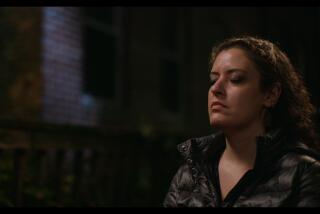A Dentist Who Can Probe the Patient’s Underlying Feelings
- Share via
The patient’s face hurt. “My mouth is so tired,” she said, “that I have to hold it up with pillows.”
As real as the pain was, Dr. Nadine Levinson found no organic explanation.
Talking with the patient, Levinson learned that she had conceived a child to save her marriage, decided to terminate the pregnancy and then finally decided to have the baby.
“Interestingly enough,” Levinson said, “the child was born with some hearing problems on the left side, which is where her pain was. And her pain began when that son, that little baby, started having operations on the left side. . . .
“What she was really talking about,” Levinson said, “was depression. But she couldn’t talk about the depression and the tired feelings in her life. She had to talk about it with regard to her mouth. And although that sounds rather wild, it happens all the time.”
Levinson, a Laguna Niguel dentist, is also a psychotherapist. After graduating from UCLA dental school, she completed a preceptorship, the equivalent of a psychiatric residency, at the University of California at Irvine Medical Center.
As co-director of the university’s Diagnostic Center for Facial Pain, she evaluates patients and teaches oral surgery residents the psychiatric aspects of oral problems. She calls herself the only dental psychotherapist in the nation.
Among her patients, she said, are a man whose “mouth gets stuck open” and a woman who wanted oral surgery to make her look younger.
Called in to consult in the case of a 10-year-old girl who had been hospitalized for aggressive behavior, Levinson said that she urged doctors not to stop the girl’s thumb-sucking, theorizing that the behavior helped ease the anxiety the girl felt about her schizophrenic mother.
“Whatever way one responds to a given dental situation, there is underlying meaning to how (a patient) behaves,” Levinson said in an interview in her hilltop, ocean-front home near Dana Point.
“I think what makes my approach so helpful is that I have the language to communicate to the dentist about what’s going on. I know the language of the patient, I know the language of the dentist--and I can communicate both to each other.
Knowing the Motivation
“I tell the dental residents, ‘Don’t take for granted that even something so simple as a filling might not have a very great meaning to that patient,’ ” she said.
“As you establish rapport with the patient, you’ll want to know what the motivation is, what the meaning might be. Why are you here? What’s going on in your life? If it’s, ‘My husband just died and I want to get my mouth redone so I’ll look better,’ beware.”
Levinson, 40, who practiced dentistry for six years, now teaches and consults about dental-psychiatric problems exclusively. She has a private office and another at UCI, but studies and consults each Friday in the airy, Hawaiian-style home she shares with her husband, Jerry, a retired radiologist; daughter Samantha, 15, and son Jordan, 10.
Levinson said her interest in psychiatry and dentistry began in her teens.
“I’ve always been (working) in this direction,” said Levinson, who studied psychology at UCLA before attending dental school. “As early as 15, I wrote a paper on Freud and was very interested in the mind and how it worked.”
Five Years in Braces
At the same time, she said, her protruding buck teeth required that she wear braces for five years.
“That was a very difficult situation for me,” she said, “being kind of an ugly duck for so long. And so a part of why I like being a dentist so much is making people feel good (about their looks). . . .
“I was very anxious about going to physicians or about any kind of medical situation (when I was young), and I think the most important part of my dental practice . . . was to make the situation as anxiety free (as possible) for patients.
“I was actually more interested in treating the anxiety than I was in doing the fillings, although of course that was very important to me.”
Levinson said both interests remain strong. But she advises dentists to identify the underlying reasons patients seek their help rather than “risk doing a procedure that will never satisfy them.”
“In some ways I think that’s where the biggest difficulties have been, even for the dentists who have tried to do the best dentistry possible for these people. . . . It looks good and it functions well, but it doesn’t work for the person.”
More to Read
Sign up for Essential California
The most important California stories and recommendations in your inbox every morning.
You may occasionally receive promotional content from the Los Angeles Times.













